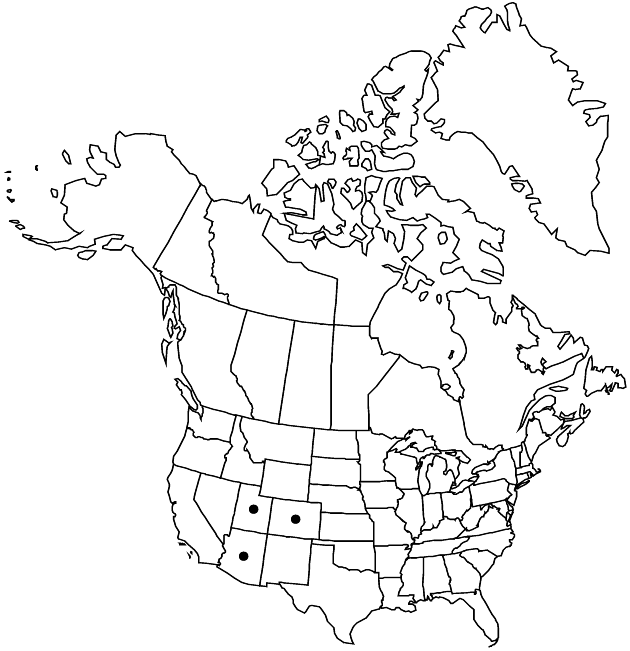Erigeron sparsifolius
Proc. Calif. Acad. Sci., ser. 2, 6: 297. 1896.
Perennials, 10–55 cm; taprooted, caudices branched. Stems (greenish) erect, sparsely strigose, eglandular. Leaves basal (usually withering by flowering, not forming conspicuous tufts) and cauline (leaf-bases broadened or not, not thickened and whitish-indurate); basal and proximalmost cauline blades oblanceolate-spatulate, 20–50 × 2–4 mm, margins entire, faces densely and closely strigose, eglandular; cauline abruptly reduced to erect linear bracts 3–20 × 0.5 mm, relatively even-sized, at least beyond midstems to immediately proximal to heads. Heads (1–) 3–10, from branches well beyond midstems. Involucres 3–5 × 5–8 mm. Phyllaries in 2–3 series, sparsely strigose or glabrous, densely minutely glandular. Ray-florets 10–14 (–20); corollas white to blue, 4–8 mm, laminae (0.7–1 mm wide) coiling. Disc corollas 2–3.5 mm (viscid-puberulent, hairs multicellular, blunt). Cypselae 1.5–2.5 mm, 3–4-orange-nerved, faces sparsely strigose; pappi: outer of inconspicuous setae, inner of 20–25 bristles.
Phenology: Flowering Jun–Sep.
Habitat: Rocky or sandy soil, soil pockets and crevices in sandstone, canyon bottoms, river terraces
Elevation: 1100–1700 m
Distribution

Ariz., Colo., Utah.
Discussion
Erigeron sparsifolius is partially sympatric with Erigeron utahensis. They are distinct in morphology and phenology, and intermediates are not common.
Selected References
None.